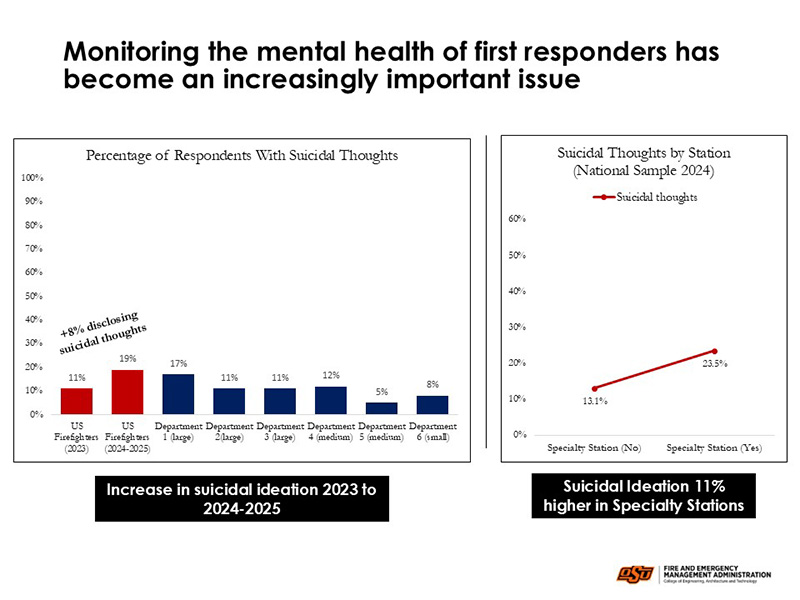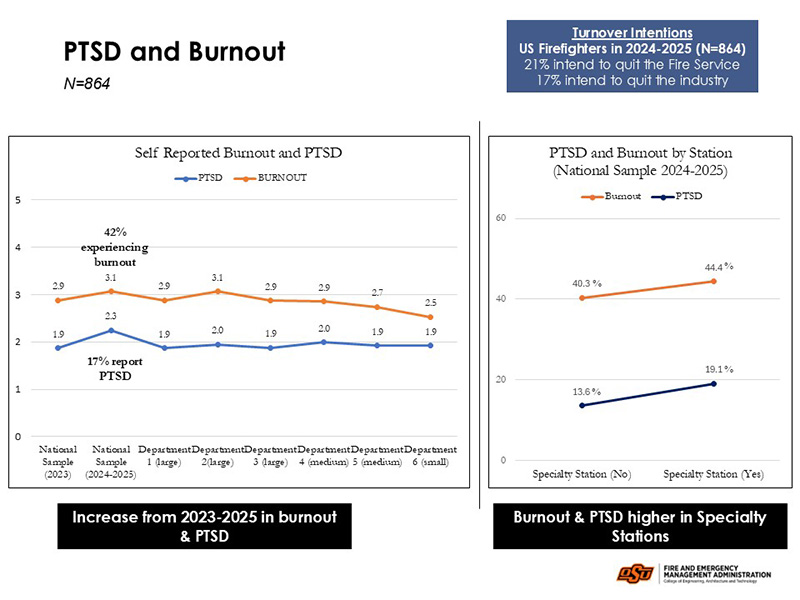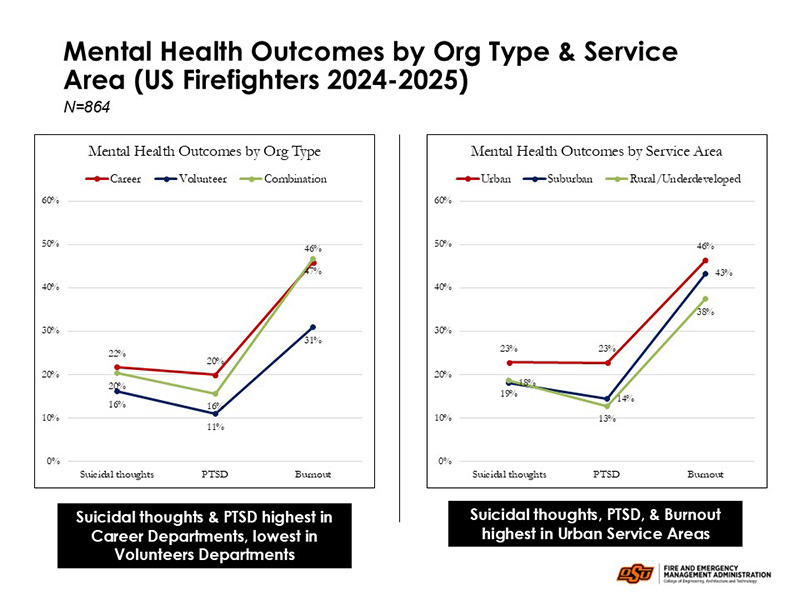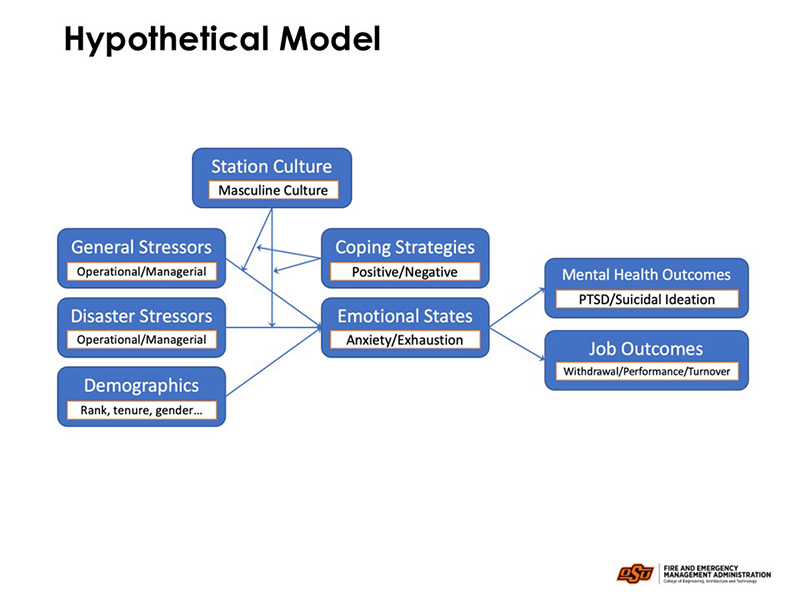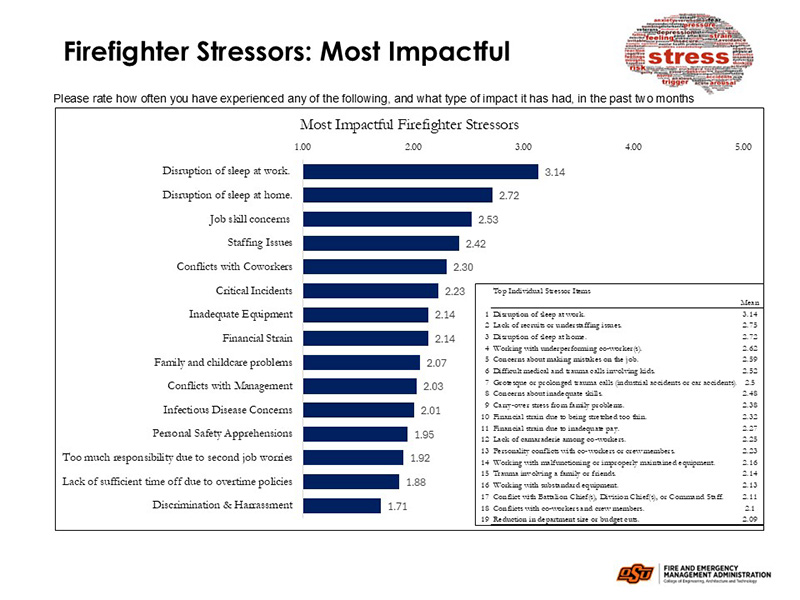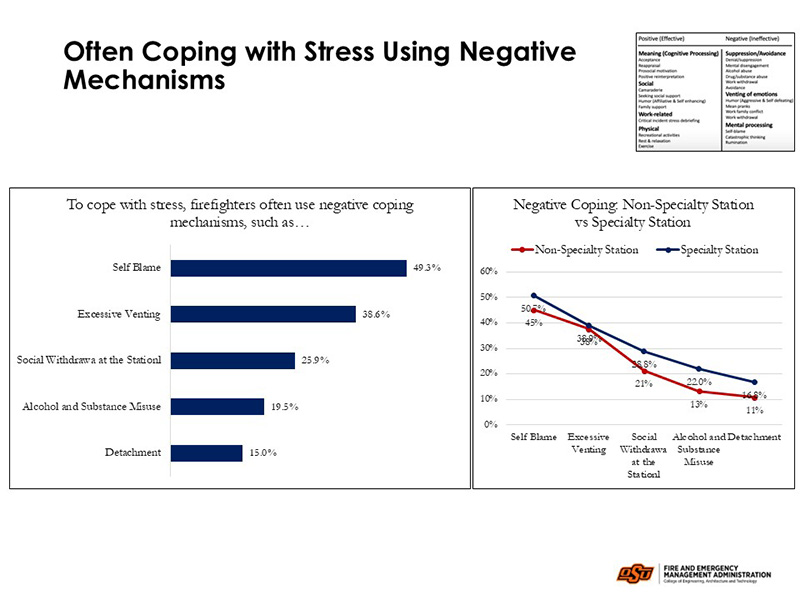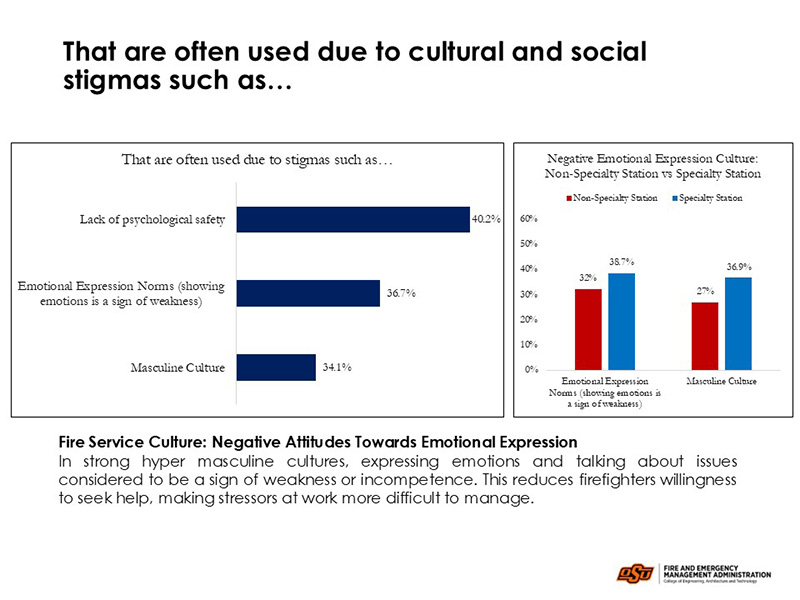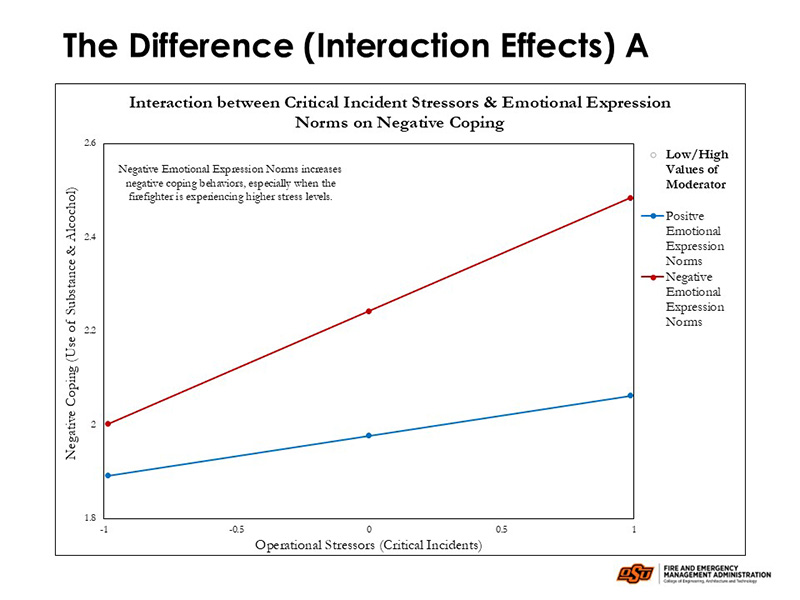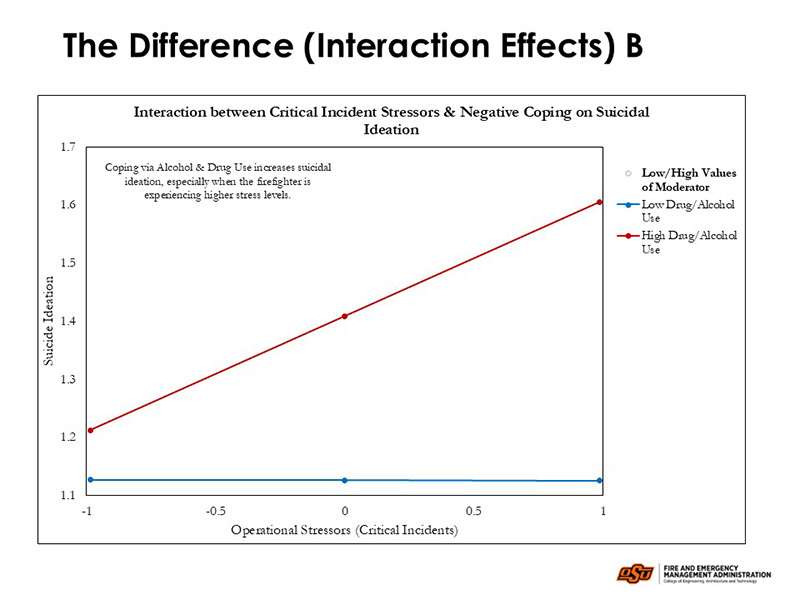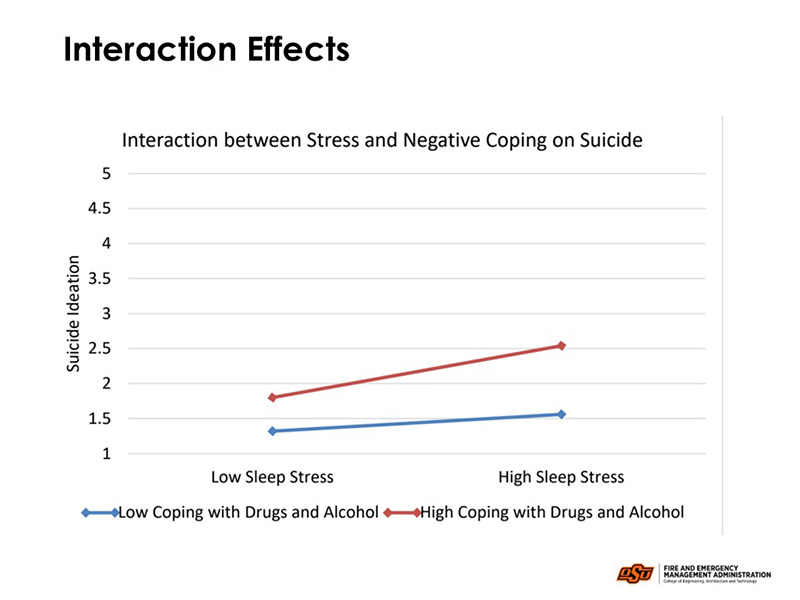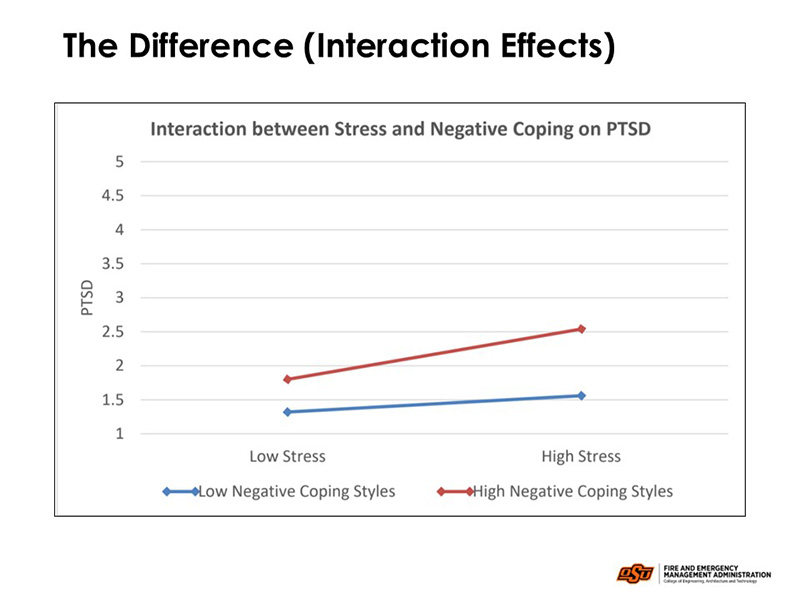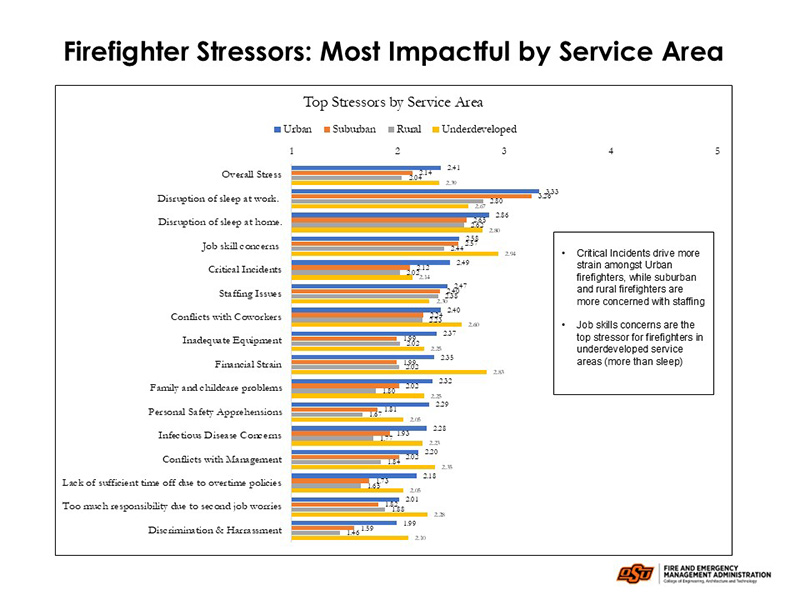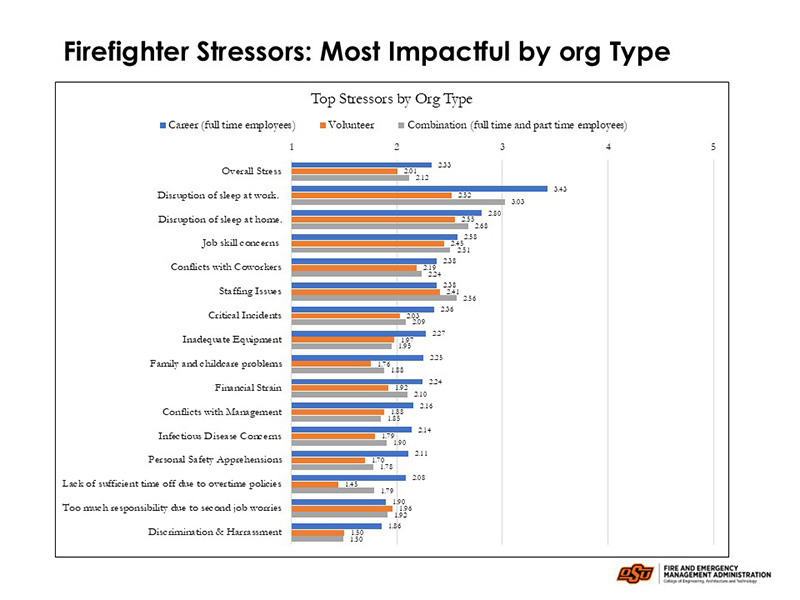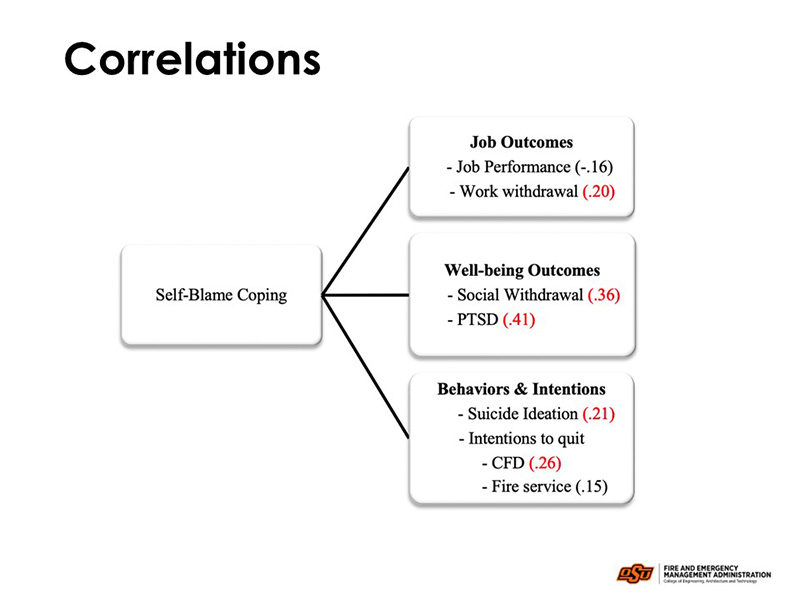The results
The main takeaway from the graph is that negative emotional expression norms increase negative coping behaviors (alcohol and drug use), especially when the firefighter is experiencing higher levels of critical incident stress.
The main takeaway from the graph is that alcohol and drug use as a coping mechanism increases suicidal ideation, especially when the firefighter is experiencing higher critical incident stress levels.
The main takeaway from the graph is that using drugs and alcohol as a coping strategy increases suicide ideation, especially when the firefighter is experiencing higher levels of stress.
This means that as stress increases, those who utilize drugs and alcohol as a coping strategy reporting higher levels of suicide ideation.
The main takeaway from the graph is that using negative coping strategies increases PTSD, especially when the firefighter is experiencing higher levels of stress
INTERACTION EFFECTS ALSO SHOW using negative coping strategies increases PTSD, especially when the firefighter is experiencing higher levels of stress.


